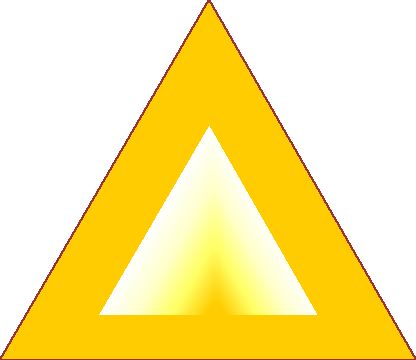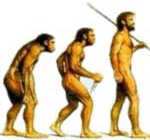Pursell's start | his outline | M O- Modus Operandi | evidence | conclusion | mythic story | previous page | other authors
![]()
Coca-Cola and the story of Prometheus share a common meaning:
"It is a complex story that scientists are now constructing . . . The story hopes to explain how human beings came to have tools and the significance of that development. But there are many ways of explaining this."
"The story hopes to explain how humans came to have tools and the significance of that development."
From them we may "infer aspirations, skills, social structures and emotions." the insights we need to understand the scope, depth and challenges of history when it comes to how technology alters people, conditions and even reality.
![]()
"The throw-away Coca Cola bottle tells us a good deal about not only our diet, but our definition of garbage, – geography of commercial reach –, and the cachet of consumer culture."
"not only the benefactor ... also the creator of humankind."
William Blake's Ancient of Days, 1794, relief etching with watercolor.
Explain what he, Carroll Pursell, means in the paragraph and the evidence he uses. . . .
tool as artifact 
Outline his first page and initial five paragraphs to discover what he believes about technology.
| items | meaning |
coca cola bottle
|
they allow us to do things" and "say things about who we are, what we value, and our place in society" (p. 14). |
Creation myths |
"The physical evidence of our beginnings as human"
… |
"Like any other texts they can be read" |
|
Homo faber, is Man the maker |
|
Provisional answers only from science sixteenth century flints attributed to humans found 19th century accumulated evidence for a Stone Age "The context of a widening contact with peoples." Some animals fashioned found materials What were the linguistic skills of these early people who used stone tools? wild vocalizations were sought out and recorded fostered theories on the role of language and tools ax -- hand ax Acheulian hand ax is 500K years ago Homo erectus cultural norms flint axes While our ancestors evolved so did their technology Archaeologists demonstrated the use of flaked tools The Langda peoples of New Guinea were clues use of the stone blade to fell a tree in 10 minutes making stone age tools in society's today beginnings of agriculture some 9000 years ago virtual explosion of art in the Upper Paleolithic (old Stone Age) stone blades, lamps, animal oil fuels from south -facing sites "appearance of jewelry, primarily symbolic purpose."
|
| subject of the paragraph | page | meaning |
|---|---|---|
| "A new level of technological accomplishment" | 26 |
Lascaux Cave in the Dordogne Valley. figure of a horse carved in limestone, 12,000 years old |
| "agricultural and village life" | 26 | Lewis Mumford maintained that the tendency to identify tools and machines with technology was melt to substitute a part for the whole." |
| gendered qualities of tools | 26 | pots a feminine and spears as masculine |
| "Mumford sees the development of the mega machine" | 26-27 | we have made "tools" the "measure of human progress." |
| Lewis Mumford | 27 | humans "total equipment for life" -- "profoundly life centered." |
| "what could have triggered the Human Revolution?" | 27 | exaptations as characteristics in animals … is it possible that technology is just such an exaptation -- originally to cut meat and chop wood--today "to solve the growing problem of communication?" |
| neocortex size and the number of people in social groups | 27 | keeping track of other individuals had "evolutionary advantages." |
| 150 optimal size of group | 28 | "millions" -- "Make truly human relationships impossible." |
| "it was language that supplemented grooming" | 28 | "language evolved in the context of social bonding between females." |
| "technology along with its cultural complexity exploded" | 28 | "a technological system" is "more than just the object and its manufacture… looking at it as a fundamentally cultural expression." |
| "read the culture of vanished societies in their material culture" | 28-29 | "Imply both community and meaning" . . . "knowing a good deal about the values and power relationships in our own society, . . . we can deconstruct our own technologies and discover the … hidden ways in which their apparent neutrality masks codes of privilege and meaning." |
| "It is a complex story" | 29 | tools are like people, complicated and open to interpretation |
| native concept of Coyote as gift bringer | 29 | culture heroes are associated with crafts and skills |
| Prometheus as the ultimate gift giver | 29 | the benefactor is "everyman" the persons who had invented or passed down skills |
"I taught them" |
29-30 | "he showed them how to harness animals.".... "All human skill and science (artful knowledge) was the gift of Prometheus." |
Gift of forbidden fire |
30 | Zeus forbid that fire ( a divine tool with godly powers) be given to humans. |
The tragedy of human frailty |
30 | Chernobyl nuclear disaster and the ironic statue of Prometheus |
| Mary Shelley's Frankenstein | 30-31 | "the self of forbidden emotions assigned to perform crimes of passion." |
| the agony of Hephaestus | 31 | Vulcan says "I hate the skill of my own hands." |
| "the attitude towards technology in the Greek myths is particularly revealing." | 31 | "This marriage of beauty (Aphrodite) and the useful art (the lame Haephastus) reminds us that much of the metalwork… its utilitarian and aesthetic characteristics… delight the eye and the mind." |
| the term technology, as we use it, dates only from the early 19th century | 32 | art, artisan & artifact derive from ars - useful and beautiful creations |
 Aristotle argued every technology had three characteristics. Aristotle argued every technology had three characteristics. |
32 | design ( or shape, extension) substance (material), and intention, and that from a knowledge of any of these (three) one could make intelligent guesses about the others." |
| "intention was at the very heart of technology." | 32-33 | "tectonic, socio-technic and ideo-technic" means tools are at once three distinctly related things: "1) strictly utilitarian, 2) used to convey social messages, 3) used to signify religious or ideological messages." | mean
| "designers cannot control" the messages others put on their inventions | 33 | submarine, machine gun, atomic bomb -- terrible meanings -- as Coke bottle in The Gods Must Be Crazy, a 1980 film of Koi San peoples reaction to finding an beverage container. |
| Sir Peter Medawar's meaning for our "evolutionary progress" | 33-34 | "all instruments are functionally parts of ourselves." "The whole human ambience… is of our making… a product of human thought." |
| Medawar | 34 | "humanity's ability to take complete control of evolution." is stunningly optimistic. |

|
34-35 | Portrayal of particularly human emergence too difficult for a permanent exhibit to display since the human family tree changes with every new fossil discovery |
| nuclear family as the natural organization of human kinship is a fiction | 35 | "to find in nature that which they considered natural (normal) in human society" raise profound political issues. |
| Australopithecus afarensis -- display | 35 |  "in at least some contemporary species, females prefer to mate not with the largest and strongest males, but with those which are the kindest to them." "in at least some contemporary species, females prefer to mate not with the largest and strongest males, but with those which are the kindest to them." |
| Female gorilla outstretched to a human female skeleton | 35 | "We were thinking of the Sistine Chapel" |
"and what if tools are themselves a kind of language or even a form of social organization."
|
|
| a kind of language | even form of social organization |
| catalysts | revisionary elements |
| a new level of technological accomplishment, but leads us to believe that | symbolic meaning had now become encoded in material objects |
|
conclusion: |
|
Pursell | Pacey–World | Postman | Head | Tenner |Pacey–meaning| Eberhart | Snow | Kaku | Boulding | Delillo | Kranzberg
| Postman–Tech | Postman–Television |